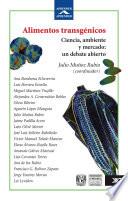
Busca tu ebook....

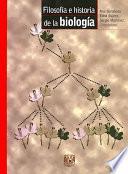
Filosofia E Historia de la Biologia
Número de Páginas: 476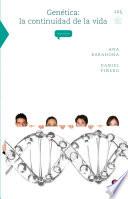
Genética
Autor: Barahona Echeverría, Ana , Piñero, Daniel
Número de Páginas: 167La genética estudia los mecanismos y patrones de la herencia, aquellas características que pasan de una generación a otra. ¿Por qué los hijos se parecen a sus padres?, ¿qué son los genes y qué sabemos de ellos?, ¿en qué medida son importantes los factores ambientales en la determinación de la apariencia de los organismos?, son algunas de las preguntas más generales a las que la genética responde.
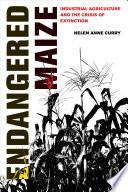
Endangered Maize
Autor: Helen Anne Curry
Número de Páginas: 335"Many people worry that we're losing genetic diversity in the foods we eat. Over the past century, crop varieties standardized for industrial agriculture have increasingly dominated farm fields. Concerned about what this transition means for the future of food, scientists, farmers, and eaters have sought to protect crop plants they consider endangered. They have organized high-tech genebanks and heritage seed swaps. They have combed fields for ancient landraces and sought farmers growing Indigenous varieties. Behind this widespread concern for the loss of plant diversity lies another extinction narrative about the survival of farmers themselves, a story that is often obscured by urgent calls to collect and preserve. Endangered Maize draws on the rich history of corn in Mexico and the United States to trace the motivations behind these hidden extinction stories and show how they shaped the conservation strategies adopted by scientists, states, and citizens. In Endangered Maize, historian Helen Anne Curry investigates more than a hundred years of agriculture and conservation practices to understand the tasks that farmers and researchers have considered essential to maintaining crop...
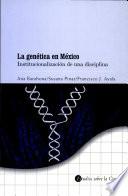
La genética en México
Autor: Ana Barahona Echeverría , Susana Pinar , Francisco José Ayala
Número de Páginas: 252
Para entender a Darwin
Autor: Ana Barahona , Erica Torrens
Número de Páginas: 112
The Cambridge History of Science: Volume 8, Modern Science in National, Transnational, and Global Context
Autor: Hugh Richard Slotten , Ronald L. Numbers , David N. Livingstone
Número de Páginas: 1066This volume in the highly respected Cambridge History of Science series is devoted to exploring the history of modern science using national, transnational, and global frames of reference. Organized by topic and culture, its essays by distinguished scholars offer the most comprehensive and up-to-date nondisciplinary history of modern science currently available. Essays are grouped together in separate sections that represent larger regions: Europe, Africa, the Middle East, South Asia, East and Southeast Asia, the United States, Canada, Australia, New Zealand, Oceania, and Latin America. Each of these regional groupings ends with a separate essay reflecting on the analysis in the preceding chapters. Intended to provide a balanced and inclusive treatment of the modern world, contributors analyze the history of science not only in local, national, and regional contexts but also with respect to the circulation of knowledge, tools, methods, people, and artifacts across national borders.
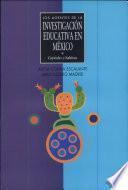
Los agentes de la investigación educativa en México
Autor: Alicia Colina Escalante , Raúl Osorio Madrid
Número de Páginas: 260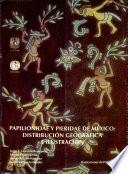
Papilionidae y Pieridae de México
Número de Páginas: 252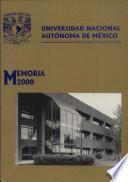
Memoria 2000
Número de Páginas: 1008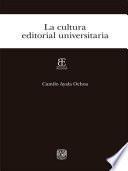
La cultura editorial universitaria
Autor: Camilo Ayala Ochoa
Número de Páginas: 200La Universidad Nacional Autónoma de México es la decana de las editoriales universitarias en México, pues comenzó a editar desde su fundación en 1910. Sus ediciones han servido de modelo para el libro académico mexicano que, por lo general, tiene su origen en las investigaciones realizadas en sus cubículos y laboratorios. Esa vocación de creación y difusión del libro ha mostrado la Universidad cuando en la década de 1920 abrió campañas para alfabetizar al país y cubrir el territorio mexicano de bibliotecas; cuando desde hace más de 90 años inició los cursos de profesionalización para editores; cuando en 1938 introdujo a México los primeros tipos de imprenta matemáticos, astronómicos, químicos y griegos; y cuando ha venido organizando la feria del libro de mayor tradición en el país. El sello editorial universitario es de abolengo porque tiene historia pero también es de pervivencia porque se ha preocupado por dar continuidad a los proyectos, por mirar hacia el futuro. Cultura editorial universitaria es un examen de esa historia y del sistema que la mantiene vigente.
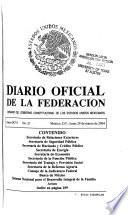
Diario oficial de la federación
Autor: Mexico
Número de Páginas: 1092
Ensayos sobre Euclides. Vol 1
Autor: Carlos Álvarez Jiménez
Número de Páginas: 320Este libro tiene como propósito principal trazar la historia de los Elementos de Euclides, una obra que con justicia puede ser considerada la más importante que se ha escrito en la geometría y probablemente en toda la matemática. Se trata de una obra escrita y concebida hacia el siglo III a .C. y que desde esa época comienza a transmitirse y difundirse; pero la historia de su origen y su difusión no son ajenas al hecho de que sobre ella seguimos discutiendo acerca de cuál pudo haber sido la versión original. Es así un gran reto comprender los cambios conceptuales en las matemáticas a lo largo de varios siglos, para dar cuenta de sus transformaciones a partir del siglo VIII, seguidos de los cambios que fueron introducidos para su difusión con la aparición de la imprenta hacia fines del siglo XV. Con esta perspectiva se propone recrear un contexto histórico y epistemológico que busca explicar las condiciones de los sucesivos cambios conceptuales.

El Porfiriato
Autor: Mauricio Tenorio Trillo , Aurora Gómez Galvarriato
Número de Páginas: 172Éste libro es el mapa aproximado de la historiografía del Porfiriato; como es evidente, hay capítulos de esta historia que están muy crecidos (por ejemplo, la economía) y otros más bien flacos de preguntas y respuestas. Y en todos los campos se lucha contra estereotipos más o menos firmes. Sobre este periodo puede decirse: mujeres y hombres trabajando.
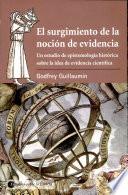
El Surgimiento de la Nocion de Evidencia: Un Estudio de Epistemologia Historica Sobre la Idea de Evidencia Cientifica
Autor: Godfrey Guillaumin
Número de Páginas: 292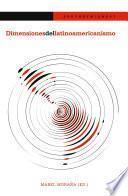
Dimensiones del latinoamericanismo
Autor: Mabel Moraña
Número de Páginas: 246Entre otros, los temas de memoria, testimonialismo, migración, realismo mágico, descolonización, cómics, "nuevo cine" e identidad reciben en este libro un tratamiento nuevo, que incorpora ángulos críticos y teóricos que permiten replantear problemas ya presentes y visualizar aspectos impensados en el corpus siempre abierto del latinoamericanismo contemporáneo.
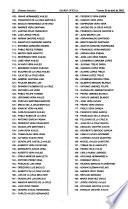
Diario oficial
Autor: Mexico
Número de Páginas: 750
Periódico oficial del gobierno
Autor: Durango (mexico : State)
Número de Páginas: 690
La memoria y el deseo
Autor: Rodrigo Parrini Roses , Alejandro Brito
Número de Páginas: 324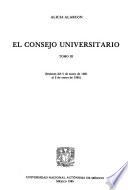
El Consejo Universitario
Autor: Alicia Bazán Alarcón
Número de Páginas: 224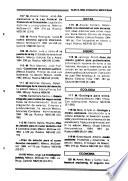
Boletín bibliográfico mexicano
Número de Páginas: 1214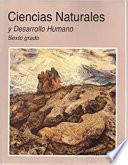
Ciencias naturales y desarrollo humano
Autor: Ana Barahona Echeverría
Número de Páginas: 254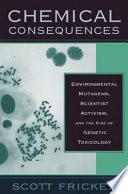
Chemical Consequences
Autor: Scott Frickel
Número de Páginas: 220Hereis the first historical and sociological account of the formation of an interdisciplinary science known as genetic toxicology, and of the scientists' social movement that created it. After research geneticists discovered that synthetic chemicals were capable of changing the genetic structure of living organisms, scientists began to explore how these chemicals affected gene structure and function. In the late 1960s, a small group of biologists became concerned that chemical mutagens represented a serious and possibly global environmental threat. Genetic toxicology is nurtured as much by public culture as by professional practices, reflecting the interplay of genetics research and environmental politics. Drawing on a wealth of resources, Scott Frickel examines the creation of this field through the lens of social movement theory. He reveals how a committed group of scientist-activists transformed chemical mutagens into environmental problems, mobilized existing research networks, recruited scientists and politicians, secured financial resources, and developed new ways of acquiring knowledge. The result is a book that vividly illustrates how science and activism were interwoven...
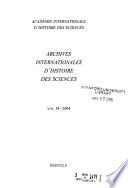
Archives Internationales D'histoire Des Sciences
Número de Páginas: 600
Anti-Catholicism in the Mexican Revolution, 1913-1940
Autor: Jürgen Buchenau , David S. Dalton
Número de Páginas: 297Anti-Catholicism in the Mexican Revolution, 1913–1940 examines anti-Catholic leaders and movements during the Mexican Revolution, an era that resulted in a constitution denying the Church political rights. Anti-Catholic Mexicans recognized a common enemy in a politically active Church in a predominantly Catholic nation. Many books have elucidated the popular roots and diversity of Roman Catholicism in Mexico, but the perspective of the Church’s adversaries has remained much less understood. This volume provides a fresh perspective on the violent conflict between Catholics and the revolutionary state, which was led by anti-Catholics such as Plutarco Elías Calles, who were bent on eradicating the influence of the Catholic Church in politics, in the nation’s educational system, and in the national consciousness. The zeal with which anti-Catholics pursued their goals—and the equal vigor with which Catholics defended their Church and their faith—explains why the conflict between Catholics and anti-Catholics turned violent, culminating in the devastating Cristero Rebellion (1926–1929). Collecting essays by a team of senior scholars in history and cultural studies, the book...
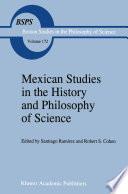
Mexican Studies in the History and Philosophy of Science
Autor: S. Ramirez , Robert S. Cohen
Número de Páginas: 224For a North American seeking to know the Mexican mind, and especially the sciences today and in their recent development, a great light of genius is to be found in Mexico City in the late 17th century. Tbe genius is that of one who surely may be counted as the first Mexican philosopher of nature, a nun of the Order of Saint Jerome: Sor Juana Ines de la Cruz. Sor Juana must speak for herself, from her penetrating exercise of an independent mind within a political and religious formation which denigrated women and circumscribed reason itself. To understand this world of ours, to join in an enlightenment which would be both natural and inspired, Sor Juana clearly understood the requirements of leaming, observing, logic and reasoning. In darkness foundering Words fail the troubled mind. For who, I ask, can light me When Reason is blind? Even now, after the great steps toward liberation of women, and the substantial scientific contributions toward sheer empirical awareness of both the multiple orders ofNature and the subtle aesthetics ofindividual art and social harmony, we too in the earthly world of the 20th century must affirm what she affirmed.
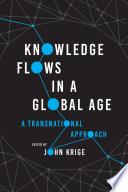
Knowledge Flows in a Global Age
Autor: John Krige
Número de Páginas: 368A transnational approach to understanding and analyzing knowledge circulation. The contributors to this collection focus on what happens to knowledge and know-how at national borders. Rather than treating it as flowing like currents across them, or diffusing out from center to periphery, they stress the human intervention that shapes how knowledge is processed, mobilized, and repurposed in transnational transactions to serve diverse interests, constraints, and environments. The chapters consider both what knowledge travels and how it travels across borders of varying permeability that impede or facilitate its movement. They look closely at a variety of platforms and objects of knowledge, from tangible commodities—like hybrid wheat seeds, penicillin, Robusta coffee, naval weaponry, seed banks, satellites and high-performance computers—to the more conceptual apparatuses of plant phenotype data and statistics. Moreover, this volume decenters the Global North, tracking how knowledge moves along multiple paths across the borders of Mexico, India, Portugal, Guinea-Bissau, the Soviet Union, China, Angola, Palestine and the West Bank, as well as the United States and the United...
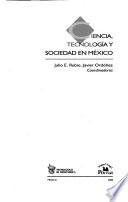
Ciencia, tecnología y sociedad en México
Autor: Julio E. Rubio , Javier Ordóñez
Número de Páginas: 220
Nosotras también tiramos a gol
Autor: Esther López Portillo
Número de Páginas: 236
De Madrid a México
Autor: Agustín Sánchez Andrés
Número de Páginas: 406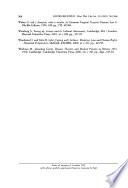
History and Philosophy of the Life Sciences
Número de Páginas: 594
2002
Autor: Massimo Mastrogregori
Número de Páginas: 440Annually published since 1930, the International bibliography of Historical Sciences (IBOHS) is an international bibliography of the most important historical monographs and periodical articles published throughout the world, which deal with history from the earliest to the most recent times. The works are arranged systematically according to period, region or historical discipline, and within this classification alphabetically. The bibliography contains a geographical index and indexes of persons and authors.
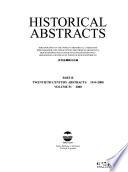
Historical Abstracts
Autor: Eric H. Boehm
Número de Páginas: 406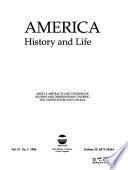
America, History and Life
Número de Páginas: 430Provides historical coverage of the United States and Canada from prehistory to the present. Includes information abstracted from over 2,000 journals published worldwide.
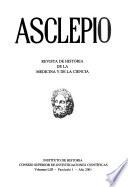
Asclepio
Número de Páginas: 656
Isis Cumulative Bibliography 1986-1995: Time periods: 19th and 20th centuries. Book reviews
Autor: John Neu
Número de Páginas: 764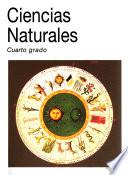
Ciencias naturales
Número de Páginas: 182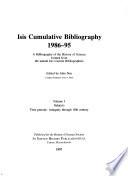
Isis Cumulative Bibliography 1986-1995: Subjects. Time periods: Antiquity through 18th century
Autor: John Neu
Número de Páginas: 648
Milenio
Número de Páginas: 914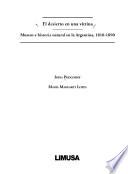
El desierto en una vitrina
Autor: Irina Podgorny , Maria Margaret Lopes
Número de Páginas: 284Opciones de Descarga
Últimos libros y autores buscados
Libros reeditados
- Una Alegría Secreta - Madanes, Leiser
- Soñar (Serie Again 4) - Mona Kasten
- Teología Sistemática - Millard Erickson
- Aprendizaje Servicio Y Responsabilidad Social De Las Universidades - Vicenç Benedito Antolí
- Soy Una Niña Rebelde. Un Diario Para Iniciar Revoluciones - Elena Favilli
- Cultura De Paz Y Publicidad Institucional - Alfonso Cortés González
- Ruralidad En Colombia - Rojas Rojas, Sonia Esmeralda
- Una Historia, Cuatro Historias. - Quintín Álvarez Núñez
- Entre La Alianza Y La Confrontación - Pilar Mendieta
- ¡Odino! - Javier Gálvez